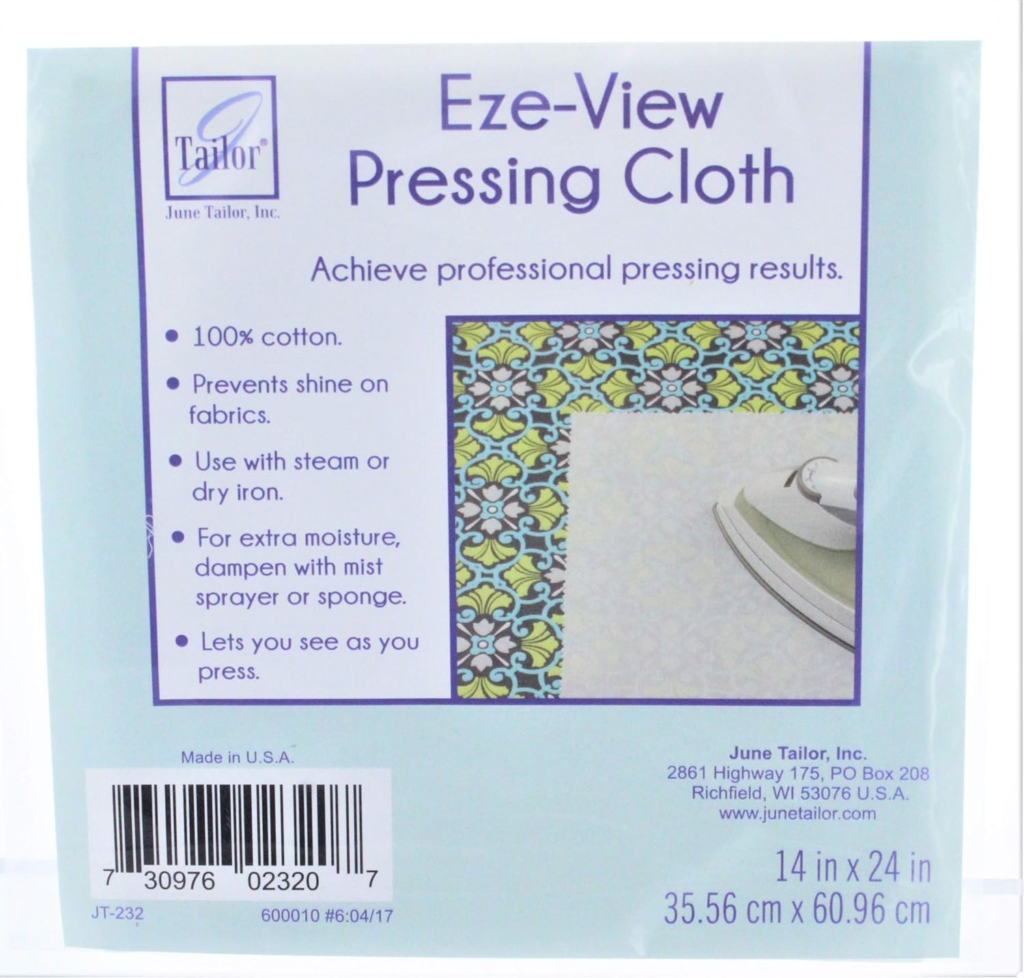A pressing cloth is a simple yet essential tool used in sewing, quilting, and garment care to protect fabrics from damage during pressing and ironing. While it may seem like a basic accessory, a pressing cloth plays a crucial role in ensuring professional results and prolonging the life of delicate fabrics. In this comprehensive guide, we’ll explore what a pressing cloth is, its various uses, types available, and the benefits it offers to sewists and crafters.

Understanding Pressing Cloth
Definition:
A pressing cloth, also known as a pressing pad or ironing cloth, is a thin piece of fabric placed between the iron and the fabric being pressed. It acts as a barrier to prevent direct contact between the hot iron and the fabric, reducing the risk of scorching, shine, or distortion.
Purpose:
The primary purpose of a pressing cloth is to protect fabrics from heat damage during pressing and ironing. It helps distribute heat evenly and prevents excessive moisture from penetrating the fabric, resulting in professional-looking finishes.
Uses of Pressing Cloth
Pressing cloths have a wide range of uses in sewing, quilting, and garment care:
- Pressing Seams: Use a pressing cloth when pressing seams open or closed to prevent seam imprints on the right side of the fabric.
- Ironing Delicate Fabrics: Protect delicate fabrics such as silk, satin, velvet, and lace from heat damage while ironing.
- Fusible Interfacing: When applying fusible interfacing, use a pressing cloth to protect both the interfacing and the fabric from scorching.
- Embroidery and Appliqué: Place a pressing cloth over embroidered or appliquéd areas to prevent flattening or distortion of the stitches.
- Quilting: Use a pressing cloth when pressing quilt blocks, seams, or appliqués to avoid shiny spots or fabric damage.
Types of Pressing Cloth
Pressing cloths come in various types and materials to suit different fabrics and pressing techniques:
- Natural Fiber Cloths: Made from materials such as cotton or linen, natural fiber pressing cloths are breathable and absorbent, making them suitable for most fabrics.
- Silicone-Coated Cloths: Silicone-coated pressing cloths provide extra protection against heat and steam, making them ideal for use with fusible interfacing and heat-sensitive fabrics.
- Teflon Sheets: Teflon sheets are non-stick and heat-resistant, making them suitable for pressing fusible webbing, vinyl, and other materials that may adhere to the iron.
- Mesh Cloths: Mesh pressing cloths allow steam to penetrate while protecting the fabric from direct contact with the iron. They are ideal for pressing delicate fabrics that require steam.
Benefits of Using a Pressing Cloth
Using a pressing cloth offers several benefits:
- Prevents Heat Damage: Protects fabrics from scorching, shine, and distortion caused by direct contact with a hot iron.
- Preserves Fabric Finish: Helps maintain the texture, sheen, and drape of delicate fabrics, ensuring professional-looking results.
- Reduces Ironing Time: Allows for faster and more efficient pressing by preventing the need to wait for the iron to cool down before pressing delicate fabrics.
- Versatile and Reusable: Can be used with a wide range of fabrics and pressing techniques and can be reused multiple times.
- Cost-Effective: An inexpensive tool that can extend the lifespan of fabrics and garments, saving money on potential repairs or replacements.
Conclusion
A pressing cloth is a simple yet indispensable tool for sewists, quilters, and crafters. By providing a protective barrier between the iron and the fabric, a pressing cloth helps prevent heat damage, preserve fabric finish, and ensure professional results. Whether you’re pressing seams, applying fusible interfacing, or ironing delicate fabrics, incorporating a pressing cloth into your sewing and pressing routine is a small investment that can yield significant benefits in the long run.
Also read: What is Terry Cloth: A Comprehensive Guide


